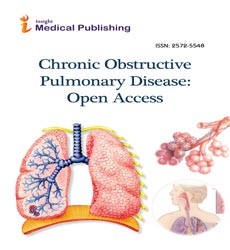Emergence of Panresistant Gram-Negative Superbugs and In-Vitro Susceptibility of Two Potential Therapeutic Antimicrobials at Three Tertiary-Care Teaching Hospitals: An Eight Year Prospective Study
Inam Danish Khan
Army College of Medical Sciences, India
Received Date: 2022-03-02 | Accepted Date: 2022-02-11 | Published Date: 2022-03-31Inam Danish Khan
Army College of Medical Sciences, India
Received date: 2022-03-02 | Accepted date: 2022-03-11 | Published date: 2022-03-31
Visit for more related articles at Chronic Obstructive Pulmonary Disease: Open Access
Abstract
INTRODUCTION Renal transplantation is frequently complicated by bacterial infections in the scenario of immunosuppression, altered metabolism and interventions resulting in prolonged morbidity. Subdued clinical presentation, antimicrobial resistance and toxicity tend to jeopardize the outcome of transplantation. This study highlights infections as well as antibiograms in Renal-Transplant-Recipients (RTR) in comparison with nephrology-ward-in-patients (NIP). METHODS 130 RTR and 160 NIP were included. Pre-transplant evaluation included clinico-demographic parameters, transplant indications, donor profile, HLA matching, infection screen and vaccination. Post-transplant immunosuppression, cotrimoxazole prophylaxis, infection profile and antibiograms were noted. Infections and antibiograms were compared. RESULTS RTR included 70.8% males and 29.2% females between 15-50 years. Common indications for transplants included Chronic glomerulonephritis (58.5%) and Chronic interstitial nephritis (21.5%). Mothers (38.5%) outnumbered other donors. Thymoglobulin, Basiliximab and Daclizumab were used for induction while Mycophenolate mofetil, Tacrolimus and Prednisolone for maintenance. Post-surgical infections in the first week post- transplant were most commonly encountered. 81.5% urinary and 27.7 % blood stream infections with 12.3% polymicrobial, 6.2% prolonged and 1.5% disseminated infections were seen. Bacteremia secondary to urinary infections was seen in 23.1% cases. E. coli (29.9%), Pseudomonas aeruginosa (17.9%), Acinetobacter baumanii (12.5%), Klebsiella pneumoniae (7.14%) andStaphylococcus aureus (6.7%) were isolated. The infection profile of NIP included 27.4% Pseudomonas aeruginosa, 18.9% Acinetobacter baumanii and 15.1% E. coli. Comparative resistogram of RTR and NIP included 88.4% and 63.2% β-lactamase producing Gram positive bacteria with 80% and 60% MRSA (p=0.04); 36.9% and 31.8% ESBL producing Gram negative bacteria respectively. CONCLUSION Transplant programs, even with established protocols, remain prone to frequent, disseminated, simultaneous polymicrobial bacterial infections with emerging multiresistant organisms complicating transplant outcome. Urinary infections with multiresistant E. coli and Klebsiella pneumonaie can lead to bacteremia. A higher degree of multiresistance harboured by transplant recipients may contribute to nosocomial hazard which emphasizes infection control measures.
Select your language of interest to view the total content in your interested language
Open Access Journals
- Aquaculture & Veterinary Science
- Chemistry & Chemical Sciences
- Clinical Sciences
- Engineering
- General Science
- Genetics & Molecular Biology
- Health Care & Nursing
- Immunology & Microbiology
- Materials Science
- Mathematics & Physics
- Medical Sciences
- Neurology & Psychiatry
- Oncology & Cancer Science
- Pharmaceutical Sciences
